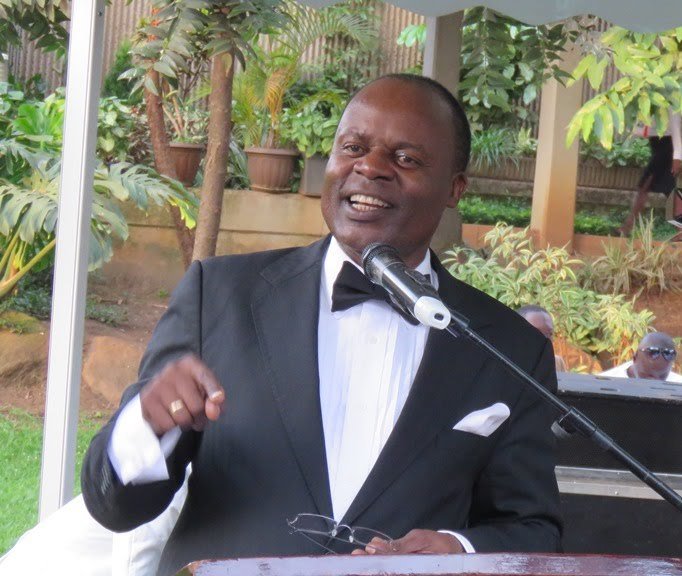Deputy Governor Bank of Uganda without a doubt is one of the most successful civil servant with a good job, stable family, educated children and owns many properties in all most all suburbs of the capital city and its neighboring towns.
Kasekende whose name had rarely been quoted in the media negatively for many years, a few months ago gained limelight as one of the richest Ugandan who has worked in the banking industry for over 30 years.
His wealth shocked Ugandans after his declaration form was published by the media.
It later emerged that his fortune baffled the government inspectorate who by law is required to probe all government officials’ wealth.
Whereas Mr. Kasekende declared his annual income at 559,848,000 million shillings, with allowances pegged at 162,798,484 million shillings he however, listed assets especially commercial buildings worth over 50 billion with the most expensive being a commercial building co-owned with Andrew Kasekende, on Gaba Close valued at 2.1 billion.
The other properties declared are based in Kampala’s high end neigborhoods including Ntinda, Naguru, Gaba and Kololo, plus upcoming suburbs like Lubowa.
The deputy governor also declared 5 commercial properties with the least priced being valued at 0.39 billion and one residential property whose valued was listed as 0.5 billion.
Other assets listed by the deputy governor include two Mercedes Benz cars,and one Toyota Hilux Pick-Up truck.
Kasekende’s sources of income were declared income from 3489 shares held in GreenHill Holdings which owns a school, savings from salary, allowances and research grants.
Other sources of income listed were gratuity payments from BOU, AFB and World Bank loans, loans from other commercial banks, rental income, pension from BOU and disturbance allowance from his employer, Bank of Uganda.
Not Enough
The media later ascertained that Mr. Kasekende under- declared his wealth to the IGG, in fact what was left is times two what he presented to the government inspectorate.
The media was shocked to learn that the deputy governor declared 16 properties he concealed more 21 properties valued at shs 20 billion.
As if that was not enough, the media learnt and published a list of 12 more properties belonging to Kasekende which he had transferred to the driver’s names Moses Musiitwa at the beginning of this year to evade the IGG’s investigations.
Most of the properties are located in Busiro district a place that has recently become a hot cake for real estate developers.
However, a section of the public expressed displeasure accusing the media of bias towards Kasekende a man who has been working in high profile institutions for over three decades and is expected to be poor.
Investigation
A new investigation conducted by this website into Kasekende’s wealth indicates that the deputy governor acquired 10 of his properties from the time Bank of Uganda took over Crane Bank in October 2016.
We found out that Kasekende bought these properties outside the Capital and of most them are acres and plots of land.
Among those whose titles we landed on include;
2.7 acres of land on block 313 in Buloba bought on December 20, 2017, 076 acres of land in Lukuli, Kyadondo block 261 bought on December 16, 2016 and 0.450 acres of land in buloba block 314 bought on 1ST February 2018.
Others bought after closure of Crane Bank but with no specific date details include, 405 acres of land in Nana, Mutuba, 0.1640 acres of land in Birongo Kyadondo block 271, 195 acres on block 261 in Lukuli and 0.440 acres of land in Mpererwe in Wakiso district.
However, we couldn’t establish the source of funds that procured these properties.
It also remains unclear whether Mr. Kasekende could have used cash obtained from the deal sealed in selling Crane Bank to DFCU as alleged by several parties in town.
Whereas Kasekende and several other officials of Bank of Uganda deny that there was no money exchanging hands while handing over Crane Bank to DFCU, they have lately failed to account for shs 478 billion which the Central Bank claims spent on Sudhir’s bank before closure.
Further the Auditor General earlier faulted Bank of Uganda for not following the right procedures while closing seven commercial banks since 1993 to 2017.
Kasekende and ilk are currently appearing before parliament to justify sale of these institutions.
